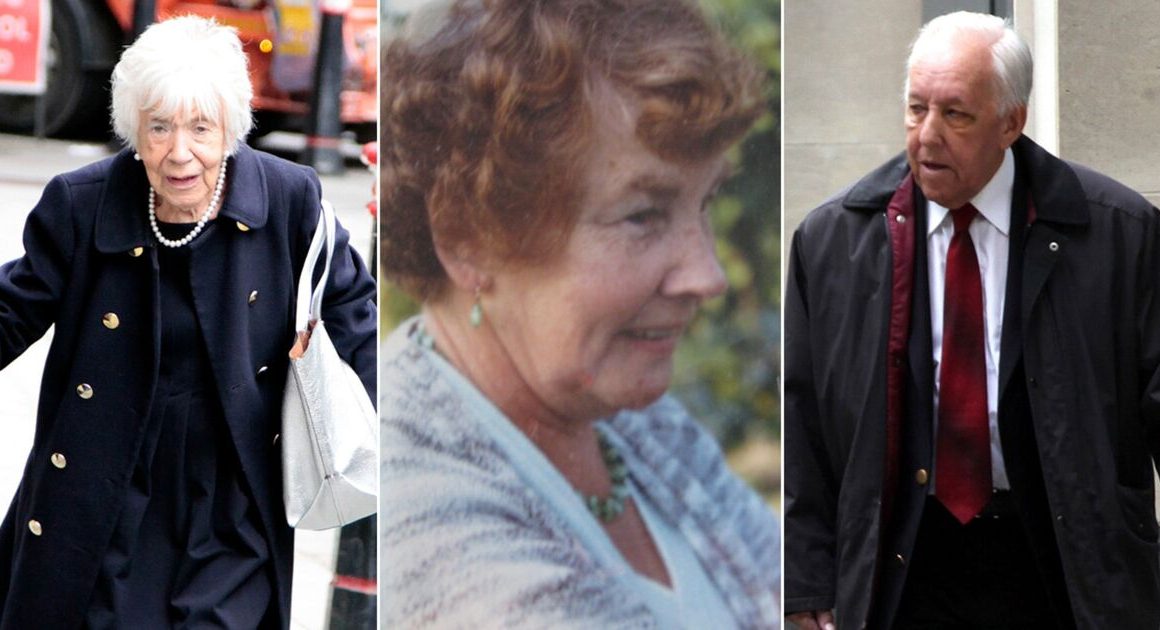A 121-year-old postcard that ended up in the right place at the wrong time has brought far-flung family members together for the first time.
Earlier this month, a postcard dated Aug. 23, 1903, and affixed with a King Edward VII stamp, arrived at the Swansea Building Society, a member-owned financial institution in Swansea, Wales.
It was addressed to a “Miss Lydia Davies” at 11 Cradock Street. Today, that’s the building society’s address, but a century ago, it was the site of several rows of houses.
Now, the card’s writer and recipient have been identified, and their descendants — four cousins, most of whom didn’t even know each other existed — have met for the first time at the West Glamorgan Archives in Swansea.
“It’s fascinating,” archivist Andrew Dulley, who helped unravel the mystery and host the reunion, told CBC. “It sort of underlines, for me, the importance of history.”
Discovering new family
In an interview with CBC Radio’s As It Happens last week, Henry Darby, a spokesperson Swansea Building Society, described the postcard as “something that should be in a museum.”
On the back is a hand-written message, penned in cursive, and signed “Ewart.” It reads, in part: “Dear L. I could not, it was impossible to get the pair of these. I am so sorry, but I hope you are enjoying yourself at home.”
Darby took the mysterious missive to the West Glamorgan Archives, where Dulley and his colleagues helped identified the card’s recipient as a Lydia Davies who lived in a house at 11 Cradock Street in 1903 with her parents and five siblings.
Her father ran a tailoring shop on the ground floor of a row house, and the family lived above it. Lydia would have been about 15 or 16 at the time, Dulley says.

The postcard’s writer, he says, was Lydia’s 13-year-old brother, Ewart, who likely sent the card from Fishguard, Wales, while visiting his grandfather on summer vacaion.
When Ewart apologized for failing to acquire “a pair of these,” Dulley says he was likely referring to postcards.
The front of the card features a black-and-white illustration of a stag, a reproduction of The Challenge by British painter Edwin Henry Landseer.
Dulley says it was one of several postcards based on Landseer’s work in circulation at the time. And Lydia, according to her descendents, collected postcards.

Ewart’s grandson, 65-year-old Nick Davies of West Sussex, England, was among the Davies descendants who met at the archives on Wednesday in a gathering organized by BBC Wales.
“It’s like a family reunion where the only connection you have is a common ancestor dating back to over 100 years ago,” he told BBC.
Also present were Lydia’s grandnieces, Helen Roberts, 58, and Margaret Spooner, 61, from Swansea, the granddaughters of David Stanley Davies, Lydia and Ewart’s brother.
Roberts told Sky News she has long been piecing together her family history online, and someone sent her a story about the postcard after connecting Lydia’s name to Roberts’s family tree on Ancestry.com.
Also on hand was Lydia’s great-granddaughter, Faith Reynolds, 47, from Devon, England, who says she had no idea she had such an extended family.
“It’s very exciting to meet the relatives,” she told BBC. “I can’t wait to see what more we can discover about our family.”
Remarkable story, unremarkable postcard
Dulley says the most interesting thing about the postcard is that it’s not particularly interesting at all.
“The thing that I’m finding odd, in a way, is that there’s nothing quintessentially remarkable about the postcard itself,” he said. “It’s the sort of thing people send to each other. It might as well be a text message nowadays.”
Despite headlines about a postcard arriving 121 years later, he says it’s likely Lydia received it all those years ago, and it later ended up back in the mail.
“It’s a nice, quaint little story that, in sort of some rural Welsh sorting office, this thing’s been sitting on the on the shelf for 120 years, but that didn’t happen here,” he said.
![The back of a postcard featuring a King Edward VII stamp in the corner, over which is rubber stamped the date: AUG 23 03" It's addressed to "Miss Lydia Davies 11 Cradock St. Swansea UK" A message in cursive reads: “Remember me to Miss Gilbert + John with love to all from Ewart.” It goes on to say: “Dear L. I could not, it was impossible to get the pair of these. I am so sorry, but I hope you are enjoying yourself at home. I have got now about 10 [unclear] pocket money not counting the train fare so I’m doing alright.”](https://i.cbc.ca/1.7310018.1725048425!/fileImage/httpImage/image.jpg_gen/derivatives/original_780/1903-postcard.jpg)
Instead, he suspects it got lost when the old house on Cradock street was cleared out, and later ended up in the hands of a postcard dealer.
The words “Fishguard Pem” are scrawled on the back of the postcard in pencil, in a different handwriting from Ewart’s, which Dulley said is “the sort of thing a postcard dealer does.”
What’s more, he says he spoke to a postcard collector who claims to have spotted the card in question recently on eBay as part of a bulk collection.
Finally, the word “UK” in the address was written with a ballpoint pen, which didn’t exist in 1903, suggesting someone added it later.
His theory? Someone bought the postcard and decided to pop it back in the mail, or directly in the building society’s mailbox, “for a laugh, basically.”
The whole story, he says, is a testament to the power of history.
“Whether it’s fashionable or not, it does unite us. It’s all around us. And the stuff that we keep is vitally important, not just for leisure reasons, but because it informs who we are. It tells us who we are,” he said.
“It includes hidden histories that aren’t talked about very often. And it’s the source material that we can use to find out those hidden histories about sections of the population that don’t get mentioned very often.”
In a statement on its website, the Swansea Building Society said: “It’s heartening to know that without the community’s involvement, this 121-year-old story might never have been uncovered, reuniting a long-lost family.”









